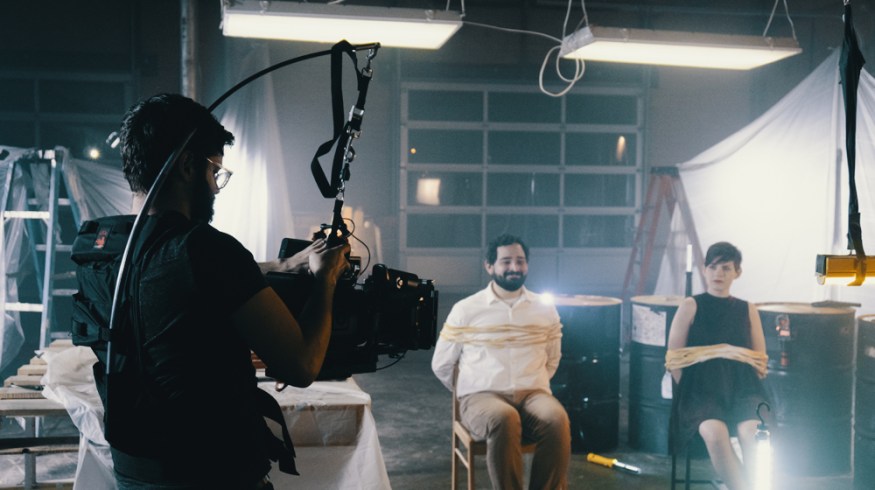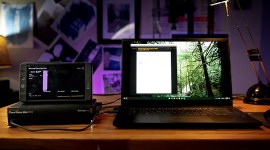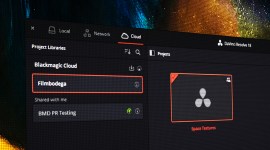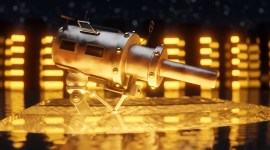
Every Stressed Out Cinematographer’s Best Friend: The Pre-Light
Extra time is perhaps the hottest commodity on any film set. Here’s why you should always fight for the chance to pre-light your set.
Let me paint a picture for you.
It’s the night before a big shoot, and you have to wake up at 5 a.m. and slog your way an hour and a half into the city. While you try to sleep, every thought possible is crossing your mind. Is there a coffee shop on the way? Probably. Will they be open? Will the lenses you rented show up on time? Hope so — first shot is at 9. Did the producer order that SkyPanel you need? You know, the one that is central to your entire setup? What if it’s not bright enough? It should be. But what if it isn’t? What if the SkyPanel is too heavy for that speed rail truss setup you were planning on? What if the SkyPanel falls over and hits the crafty table, and deli meat flies everywhere?

Image via Photographee.eu.
I don’t know about you, but this is what most nights before a big shoot look like for me. Tossing and turning, thinking through setups and imagining my lighting diagrams — and just worrying about every little thing. It’s less than ideal. You just want it to look the way you see it in your head, and the more you worry about it, the more it feels like everything will go wrong.
Filmmaking is stressful enough even without unknown variables. However, there is one really great way to eliminate a ton of unnecessary variables from your film set: The Pre-Light.
Removing Unnecessary Variables
A pre-light is simply lighting the set earlier in the day (or the day before) of shooting — when nobody but you and the lighting crew is on set. This creates a truly comforting environment, where all you’re doing is lighting, discussing, and problem-solving. As a cinematographer, this eliminates a whole world of stress — and many unnecessary variables.
If there’s an industry where Murphy’s Law (anything that can go wrong, will) is thunderously true, it’s the film industry. Every shoot brings a new set of challenges — and a truly infinite number of ways things can go wrong. This is true for any position on a film crew, but for the cinematographer, it means potentially creating images that will haunt you for the rest of your career.
Okay, maybe that’s a bit dramatic, but I can’t be the only one who watches an old project and wonders what might have happened if I’d had a bit more time to light it.

Image via Gnepphoto.
No matter how experienced you are, and how much you’ve planned and diagramed your setup, there will always be something that doesn’t go quite according to plan. A light doesn’t have as much output as you expected, or you need an extra dimmer switch to get the right look from a practical in the scene. You might need an extra fixture or more C-stands. These are all variables that you can control with a pre-light.
If you have the time, you can even bring your director in and walk through blocking. You can also plan how you’ll light for coverage and keep an open line of communication with your team (grip & electric).
Picture this: a fully lit set and a game plan for the next morning — you and the director both know exactly what is going to happen. Sounds nice, doesn’t it?
Getting The Exact Look You Want
Cinematographers can visualize a certain look, and with the right resources, they can achieve it in-camera. This takes a lot of elements, but one of the most important is time. Without enough time, the chances of getting the look you want dwindle pretty quickly.
I think it’s really difficult to be objective about our own work, which results in having issues with most of that work. Something that we’re not fully proud of might look fantastic to someone else. However, I find that the few things that I’ve shot that I’m fully at peace with and proud of are the ones I got to pre-light. This is because I could to take the time to get as close as possible to my vision for the project. I got to mess with lights until I got exactly what I envisioned.
Nothing is worse than that stressful feeling when the assistant director asks you “How much longer do you need?” and you’re looking at the monitor, and you realize that it looks okay, but it doesn’t look great — and you know pushing it further will stress everyone out and put the production behind schedule. So you accept it the way it looks, and it bothers you every time you see it.
Don’t do that. Fight for a pre-light, and you can take all the time you need the day before. Dial it in just right.
Creating a Well-Oiled Machine

Image via gnepphoto.
There’s a reason that almost all budgeted productions do a pre-light on set. It’s the best use of time and money, and it yields the best results on all fronts — both creatively and financially.
Not every setup in a project will accommodate a pre-light (you can still go guerrilla-style whenever you need to — that’s fun too), but for those complex setups, particularly those that take up a lot of screen time, it’s worth doing a pre-light every single time.
Consider this: the expense of bringing the Grip & Electric crews on set for a day to work through all the technical limitations, blocking expectations, location needs, and anything else that might come up is a much better use of funds than slowing everything down on production day — and creating stress for everyone.
Pre-lighting will enable everyone to be at their best during the most important part of production. This will please the producer and the director alike, since you’ll be able to make the absolute best use of time during recording. And while things still may go wrong, there won’t be a million issues . . . while the AD is (rightfully) breathing down your neck.

Image via Fedorovekb.
You don’t want any limitations to determine the pace of your work. You want to create an environment just for storytelling — an environment wherein the actors and the director are free to move about the set in a way that brings out their best. This is why you do a pre-light.
So you can sleep at night.
So when you arrive on set, you can flip the lights on one by one and look at the assistant director and say “All right, let’s make a movie.”
Looking for more cinematography tips and tricks? Check out these articles.








